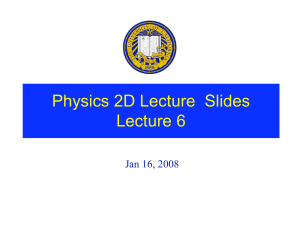Relativistic Electron Lab
advertisement
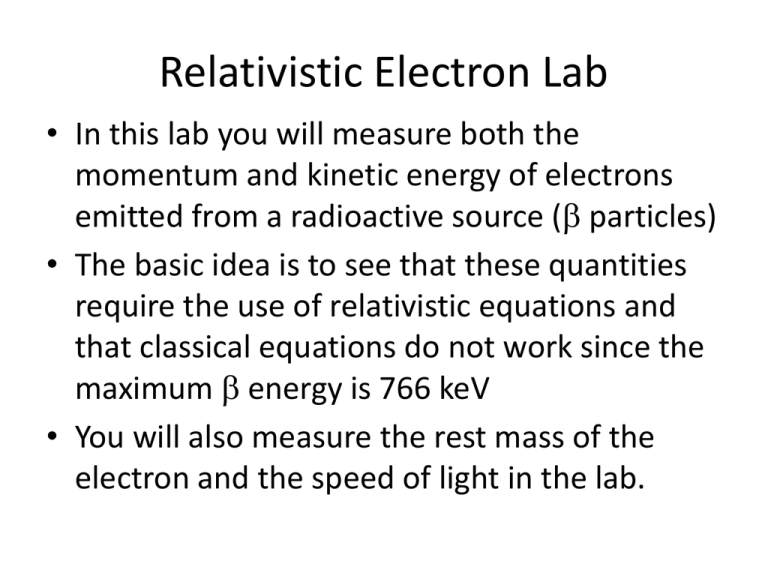
Relativistic Electron Lab • In this lab you will measure both the momentum and kinetic energy of electrons emitted from a radioactive source (b particles) • The basic idea is to see that these quantities require the use of relativistic equations and that classical equations do not work since the maximum b energy is 766 keV • You will also measure the rest mass of the electron and the speed of light in the lab. Relativistic momentum Remember this is a relativistic problem: F = evB = γma (since F is perpendicular to v; otherwise it’s more complex); but a = v2/r so that evB = γmv2/r ; solving for r, we have r = γmv/eB = p/eB so that we have p = eBr Experiment Overview • First you’ll calibrate the multichannel analyzer so that we have a correspondence between channel number and detected particle energy • Second you’ll measure the fixed radius of the orbit and the slit widths (so you’ll know the spread in r) • Third, you’ll set and measure B (fixing p), and then count all detected particles that have a corresponding kinetic energy Further Details - 1 • Chamber is evacuated using a mechanical pump • B is measured using a Hall probe – must be oriented properly to read B field in chamber (Hall probe) • Source is a 10 mCi 204Tl beta emitter • Detector is silicon surface-barrier detector – a stopped charge particle produce ionization whose total charge is proportional to the energy of the particle – this charge is collected at an electrode (due to a 550 V potential applied across it). The current pulse is then integrated by a preamp to produce a voltage pulse with an amplitude proportional to the particle energy – this is amplified by a linear amplifier and analyzed by a MCA to perform a PHA. • The duration of the experiments should depend on B, with longer experiments needed as B increases (range 5 to 12 hours) Relativistic energy Relativistic kinetic energy is given by: pc K E mc 2 2 mc 2 2 mc 2 Manipulating this equation, we find: K mc 2 Or: K 2mc Solving for p2: 2 2 2 pc m c K mc p 2 2 2K 2 2 2 2 pc m c 2 K 2c 2 m 2 2 Data Analysis • You will, for each B, measure the kinetic energy of the detected electrons • Then from our derived equation connecting K and p: p 2 K 2K 2c 2 m You can plot this as y = (1/c2)x + m to find values for c and m for the electron and to see that the relativistic equations are correct vs the classical K = p2/2m Further Details – 2 • For each B, determine p with its uncertainty • For each spectrum, determine the centroid of the relativistic electron peak (in keV), its fullwidth-at-half-maximum (FWHM, also in keV), and the net area (number of electrons) in the peak • In your graph, also plot classical and relativistic theory and error bars on the points This is a Collaborative Lab • We will, all together, calibrate the MCA, you will measure the geometry of the chamber; then we’ll set-up and start the first run • You will each take data on a schedule – • You will need to: – – – – – Stop and save the experiment (in .SPC format) Analyze the peak and record values Re-measure the B field, after zeroing, and record Re-set the B field, measure and record new value Clear data and re-start experiment Schedule • Tuesday – group: calibrate, measure and start B = 500 G #1: ~6 h later – start B = 600 G #2: Wed. AM – start 700 G #3: late PM – start 800 G #4: early Thurs AM – start 900 G #5: Thurs evening – start 1000 G #6: Friday AM – end and initial plot data; decide if more needed (consult with me) and start new run or close down Room Key – outer and inner door keys hidden outside N008
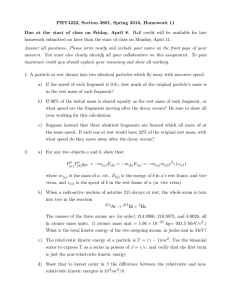
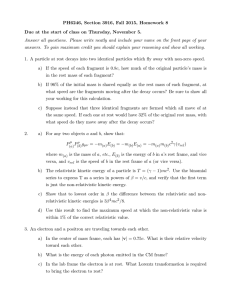
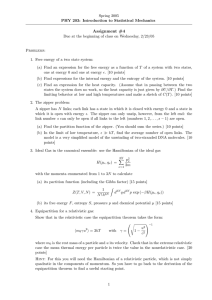
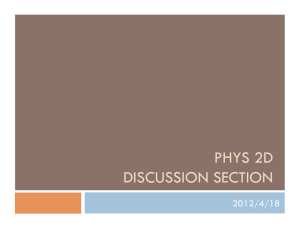
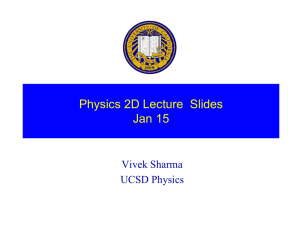
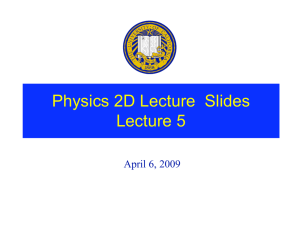
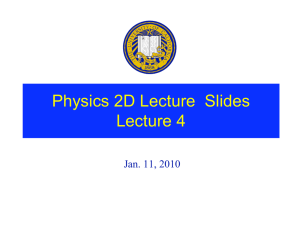
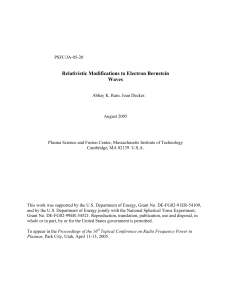
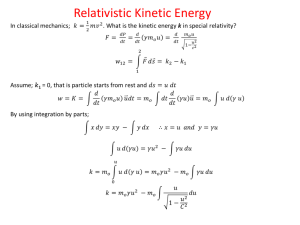
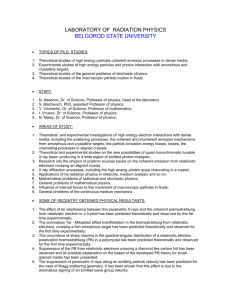
![Relativistic_KE[1]](http://s2.studylib.net/store/data/005627416_1-a2634484541e239b68eb98cf7f28db4c-300x300.png)
